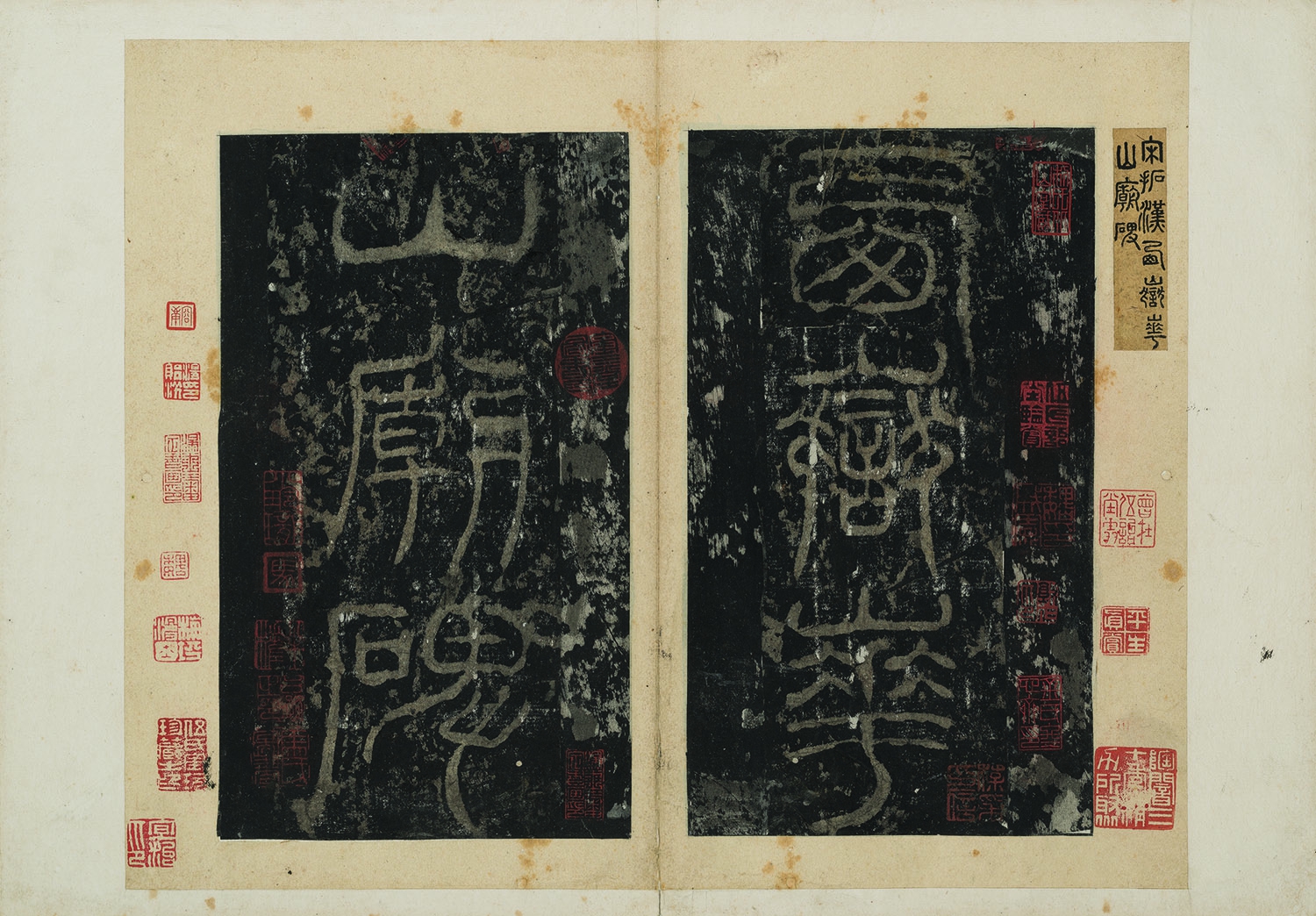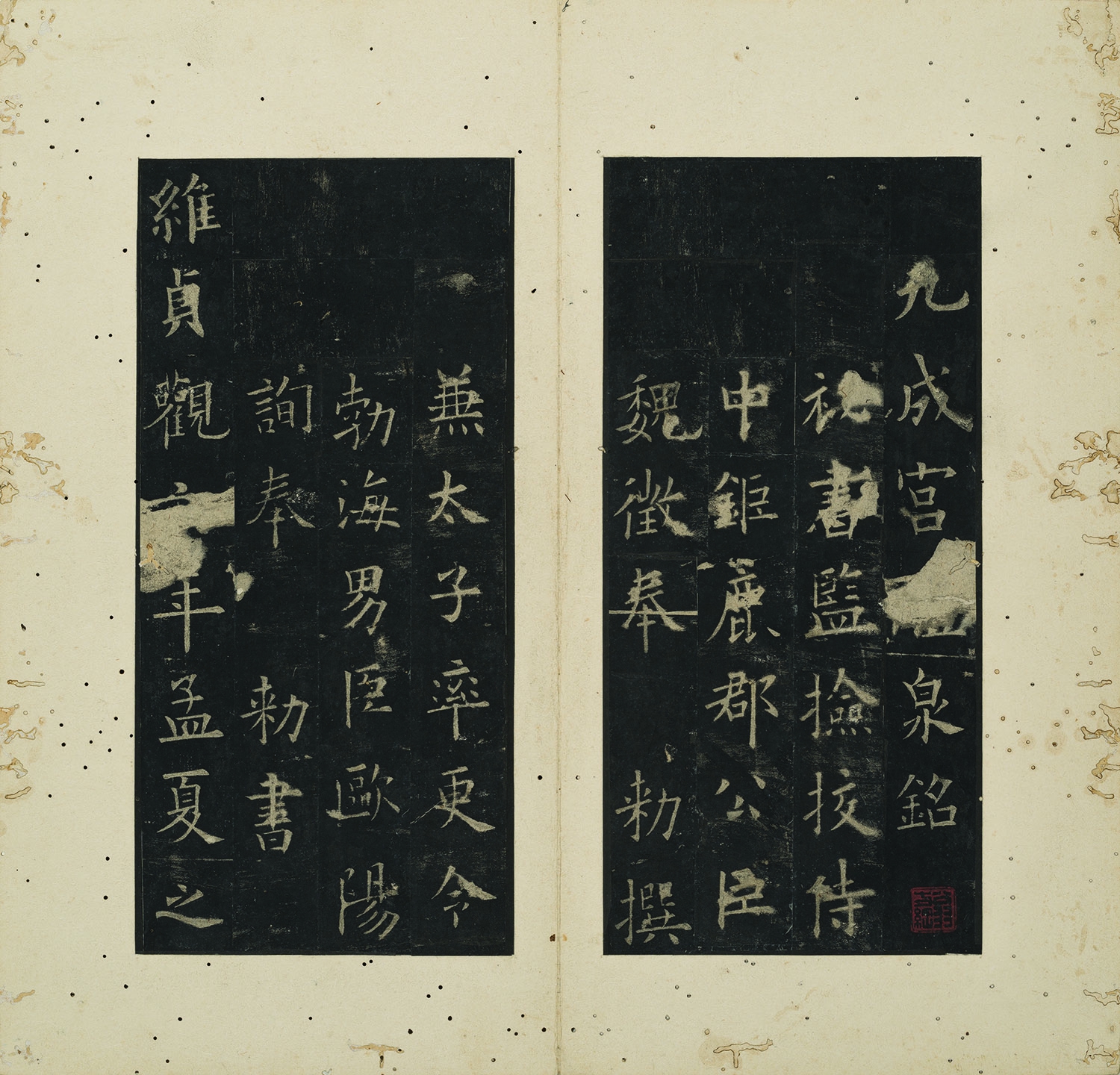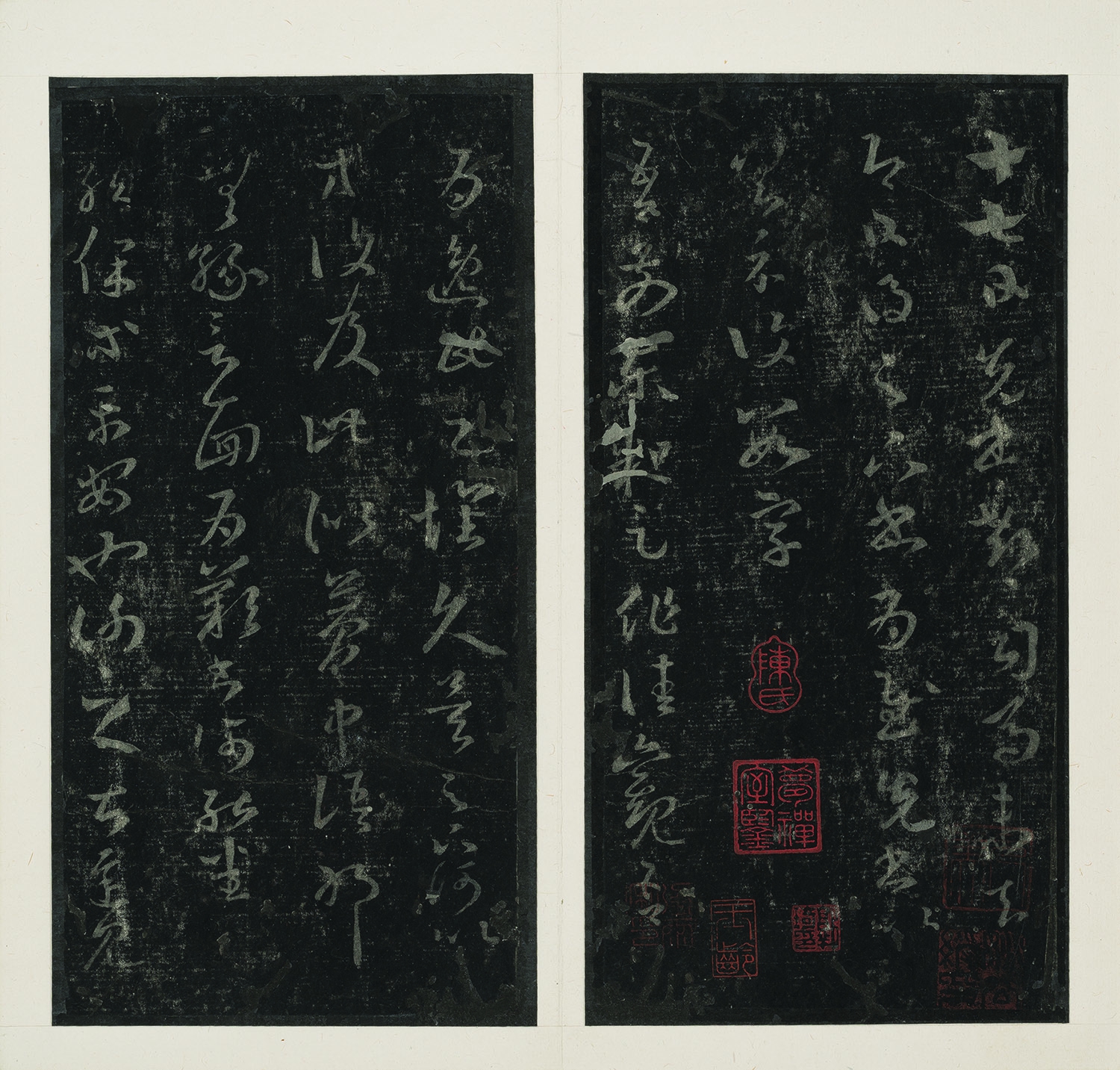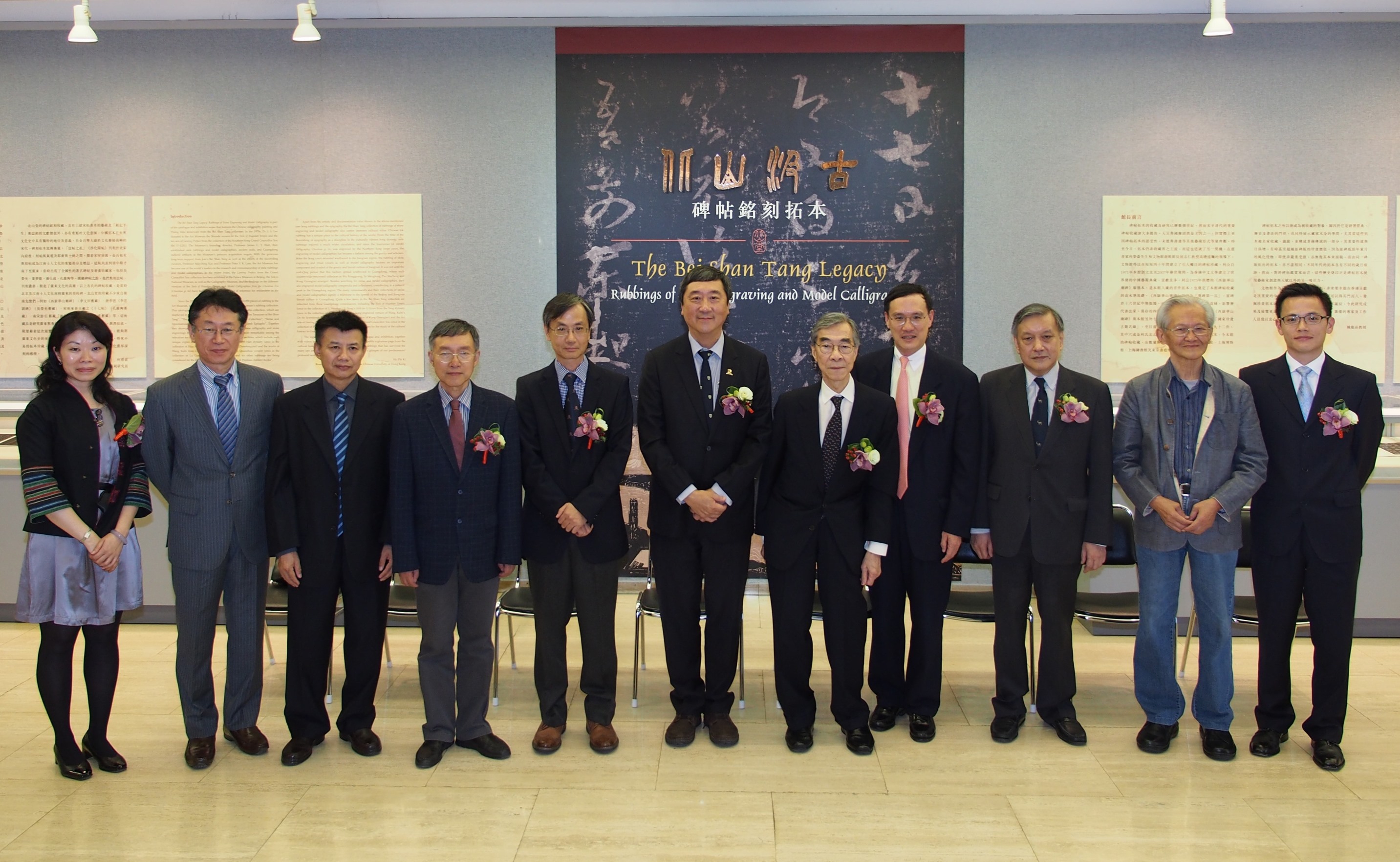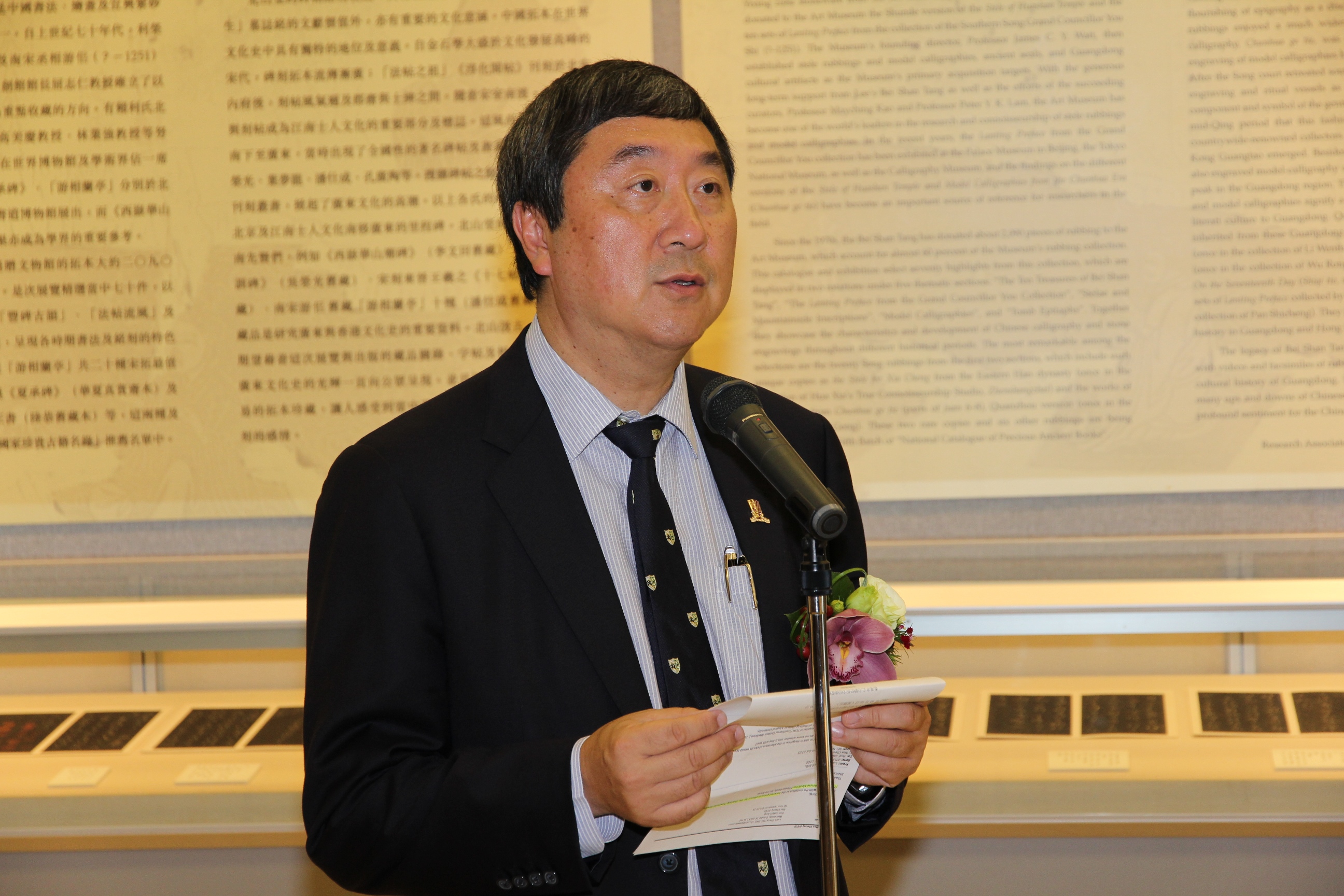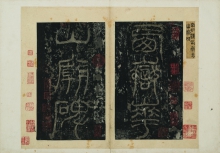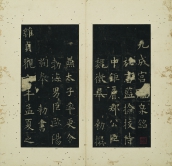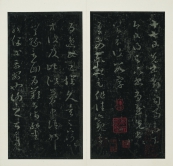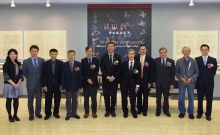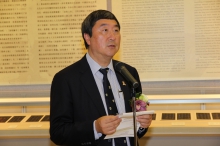CUHK
News Centre
CUHK Art Museum Exhibits Precious Ancient RubbingsEight Pieces Being Considered for the National Catalogue of Precious Ancient Books
The Art Museum of The Chinese University of Hong Kong (CUHK) will present the exhibition ‘The Bei Shan Tang Legacy: Rubbings of Stone Engraving and Model Calligraphy’ from 17 October 2015 to 31 January 2016. This exhibition is a part of the series of themed exhibitions for the Bei Shan Tang Collection continuing from the previous exhibitions of Chinese calligraphy and Yixing Zisha Stoneware. It features, in two phases, 70 pieces of precious ink rubbing. Members of the public are welcome to visit the exhibition. Admission is free.
The opening ceremony of the exhibition has been held today (16 Oct). The officiating guests included Mr. Chien LEE, Chairman, Bei Shan Tang Foundation; Prof. Joseph S.Y. SUNG, Vice-Chancellor and President of CUHK; Mr. Christopher MOK, Chairman, Advisory Committee, Art Museum, CUHK; Prof. LAI Chi Tim, Acting Director, Institute of Chinese Studies, CUHK; Prof. FU Shen, Professor, Graduate Institute of Art History, Taiwan University; Mr. SHI Anchang, Researcher, The Palace Museum; Prof. Josh YIU, Acting Director, Art Museum, CUHK; and Dr. HO Pik Ki, Associate Researcher, Art Museum, CUHK.
In Chinese, the term beitie combines stele (bei) and model calligraphy (tie), generally referring to the extant works of ancient calligraphers. Such works are often collected by connoisseurs, and as exemplary models of the written script, they are studied and imitated by later generations. They are important vehicles of Chinese calligraphy. Not only are steles and model calligraphies embedded with rich historical information, but they also carry artistic and cultural value by preserving the masterpieces of the past ages.
Since the 1970s, the Bei Shan Tang has donated about 2,090 pieces of ink rubbings to the Art Museum, CUHK. This exhibition features 70 exquisite specimens from the collection, twenty of which are notable ink rubbings dated from the Song dynasty. Among the four well-known extant rubbings of the Stele of Huashan Temple, the Art Museum’s ‘Shunde version’ is the earliest one and most parts remain undamaged, when compared to the others in the Palace Museum and the Calligraphy Museum, Tokyo. It is always considered to be the key highlight of the museum collection. Moreover, the Bei Shan Tang gifts comprise ten pieces of Lanting Preface rubbings which were once collected by You Shi, the Grand Councillor of the Southern Song dynasty. The Art Museum now holds the largest numbers of ‘Youxiang Lanting’ amongst museums worldwide.
As well as this, eight rubbings of the Bei Shan Tang Collection in the Art Museum are being recommended for the Fifth Batch of ‘National Catalogue of Precious Ancient Books’. This catalogue is proposed by the Ministry of Culture and established by the State Council of the People’s Republic of China. It imposes strict selection criteria. Listed materials are of historical, ideological and cultural significance, or rare books written in the languages of ethnic minorities. They should be written or printed before 1912, compiled or bound in the traditional manner. The rubbings being considered for listing include Stele for Xia Cheng from the Eastern Han dynasty, Inscription on the Sweet Spring in the Jiucheng Palace from the Tang dynasty and the Song-engraved Model Calligraphies from the Chunhua era with others. All of them will be showcased to the public in the exhibition.
In order to promote the study of and learning from rubbings, the Art Museum has published a catalogue featuring two essays and elaborations of the exhibits, introducing the collection in detail. The Art Museum also presents three facsimiles of rubbings with different scripts in full colour and actual size for calligraphy practice and rubbings study. In addition, the Art Museum will hold a public lecture namely ‘Research, Conservation and Collection of Chinese Rubbings’ on 17 October. Prof. James Watt from the Metropolitan Museum of Art, New York, Prof. Fu Shen from the National Taiwan University, Mr. Shi Anchang from the Palace Museum, Mr. Hu Haifan from Peking University, Mr. Tomita Jun from Tokyo National Museum, and Prof. Harold Mok and Dr. Ho Pik Ki from CUHK have been invited to share their research on rubbings.
Details of the ‘The Bei Shan Tang Legacy: Rubbings of Stone Engraving and Model Calligraphy’ are as follows:
|
Exhibition Period: |
17 October 2015 – 31 January 2016 |
|
Exhibition Venue: |
Gallery I, Art Museum, CUHK, Shatin |
|
Opening Hours of Art Museum: |
Mondays, Tuesdays, Wednesdays, Fridays and Saturdays 10:00am–5:00pm |
The Stele of Huashan Temple Clerical script Eastern Han dynasty, dated 165 Ink rubbing on paper, 11th – 12th century Album of 27 leaves, each leaf 25 x 17.6 cm Gift of Dr. Lee Jung Sen, Art Museum Collection, CUHK 1973.0678
Inscription on the Sweet Spring in the Jiucheng Palace Calligraphy by Ouyang Xun (557-641) Tang dynasty, dated 632 Ink rubbing on paper, 12th century Album of 36 leaves, each leave 28.3 x 13.3 cm Gift of Bei Shan Tang, Art Museum Collection, CUHK 1992.0024
On the Seventeenth Day (Shiqi tie) Text and calligraphy by Wang Xizhi Cursive script Recut of the prototype produced in Zhenguan era (627-649) of the Tang dynasty Ink rubbing on paper, 12th century Album of 35 leaves, each leaf 25.5 x 13 cm Gift of Bei Shan Tang, Art Museum Collection, CUHK 1979.0018
(From left) Dr. Ho Pik Ki, Associate Researcher of the Art Museum, CUHK and Curator of the exhibition; Mr. Tomita Jun, Supervisor of the Planning Division of the Tokyo National Museum; Mr. Hu Haifan, Supervisor of the Rubbing Section of the Beijing University Library; Mr. Shi Anchang, Researcher of the Palace Museum; Prof. Lai Chi Tim, Acting Director of the Institute of Chinese Studies, CUHK; Prof. Joseph Sung, Vice-Chancellor and President of CUHK; Prof. James Watt, Curator Emeritus of Asian Art of the Metropolitan Museum Art and Founding Director of the Art Museum, CUHK; Mr. Chien Lee, Chairman of the Bei Shan Tang Foundation; Mr. Christopher Mok, Chairman of Advisory Committee of the Art Museum, CUHK; Prof. Fu Shen, Professor of the Graduate Institute of Art History, Taiwan University; and Prof. Josh Yiu, Acting Director of the Art Museum, CUHK.


